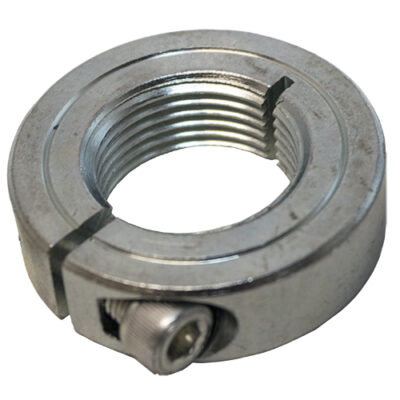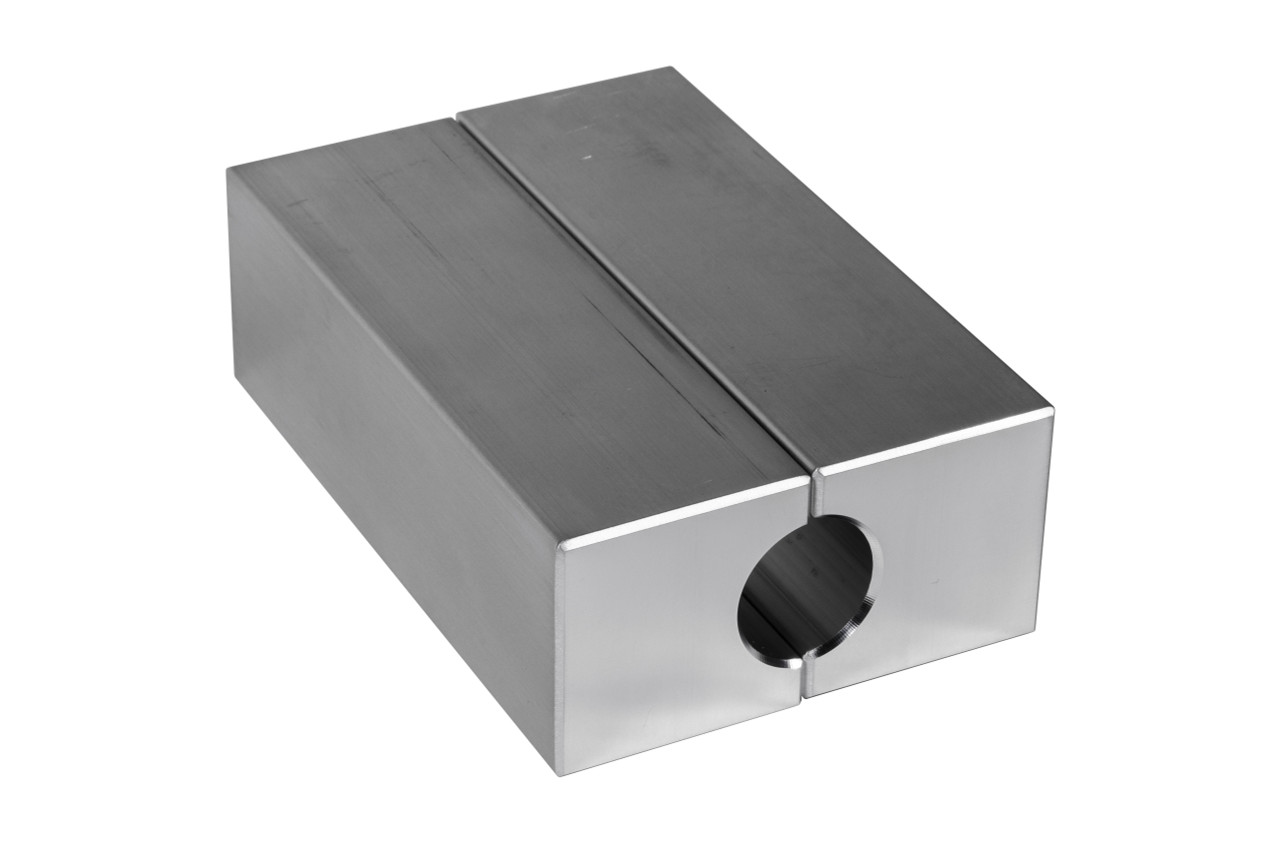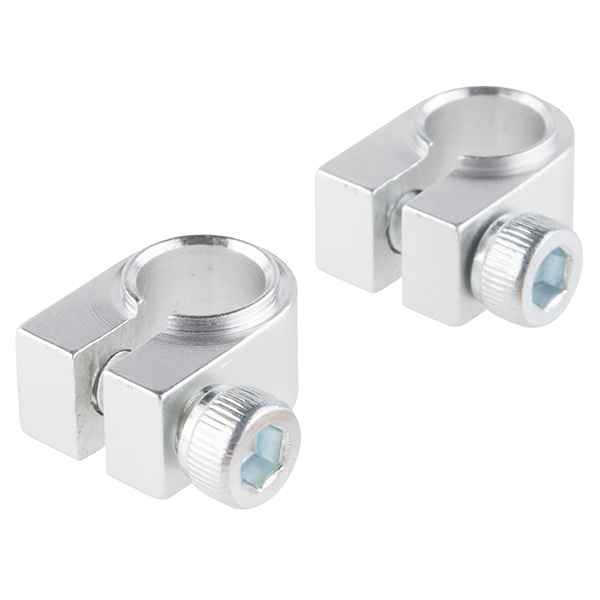Product Description
Custom Shaft Locking Collar 10mm/13mm/16mm/22mm Aluminium Split Ring Stop Collar Drill Bit Shank Depth Stop Metal Clamp Collars for Spline Shafts
Basic Information :
| Tolerance | 0.02~0.1mm. |
| Materials | Low, middle,high carbon steel / spring steel / Stainless steel 201, 301, 304, 316 / Aluminum / Brass / Bronze / Copper / Titanium / Plastic (PP, Nylon, PVC, APET) Brass or ABS,POM Ect And Customized raw material. |
| Surface Finish | Heat treatment / Polishing,Electronic Polishing / (Zinc, nickel, chrome, tin, brass, glod, silver, titanium) Plating / Electrophoresis / Black Oxide / Hot-dip galvanizing / Powder Coating / Paint Coating / Blasting / Shot Blasting / Bead Basting / Anodizing / Phosphating / PAD Printing / Laser etching / Dacromet Coating / Enamel. |
| Payment terms | Trade Assurance TT,paypal,Western Union,alipay,L/C. |
| Packing Detail |
Inner Packing: PE bag / EPE Foam Packing / Anti-Rust Paper Packing / Blister / SMT / Vacuum Packing / Plastic Box Packing / Color Box Packing. Outter Packing: Stretch Film Packing / Carton / Pallet / Wood Case. |
Our Advantage
-
Provide OEM/ODM service and assembling service, since 2000.
- One-stop purchasing service :Stamping part, CNC lathe part, CNC milling part, Springs, Shafts, fastener etc.
- The 2ndtier supplier of , factory audits passed.
- Product certification: RoHS, HE, vailable.
- Management certification: ISO/9001: 2015 and IATF16949 Passed.
/* January 22, 2571 19:08:37 */!function(){function s(e,r){var a,o={};try{e&&e.split(“,”).forEach(function(e,t){e&&(a=e.match(/(.*?):(.*)$/))&&1
| After-sales Service: | Custom Service |
|---|---|
| Warranty: | Custom Service |
| Condition: | New |
| Certification: | RoHS, ISO9001 |
| Standard: | DIN |
| Customized: | Customized |
| Samples: |
US$ 50/Piece
1 Piece(Min.Order) | |
|---|
| Customization: |
Available
| Customized Request |
|---|

What are the temperature resistance properties of locking collars, and how do they perform in extreme conditions?
Locking collars are designed to provide secure and reliable fastening in various industrial applications. Their temperature resistance properties play a crucial role in determining their performance in extreme conditions. Here’s an overview of the temperature resistance properties of locking collars and how they perform in extreme conditions:
Locking collars are typically made from materials that exhibit good temperature resistance. Common materials used for locking collars include stainless steel, carbon steel, aluminum, and various types of thermoplastics. The specific material composition and construction of the locking collar influence its temperature resistance capabilities.
Temperature Resistance Range:
The temperature resistance range of locking collars can vary depending on the material used. Stainless steel locking collars, for example, generally offer excellent temperature resistance, with the ability to withstand high temperatures ranging from 500°F (260°C) and above. Carbon steel locking collars typically have a lower temperature resistance, typically up to around 400°F (204°C). Thermoplastic locking collars can have a temperature resistance range that varies depending on the specific thermoplastic material used.
Performance in High Temperatures:
In high-temperature environments, locking collars with good temperature resistance properties maintain their structural integrity and functionality. They are designed to withstand the thermal expansion and contraction that occurs as the temperature changes without compromising their grip on the shaft. High-quality locking collars can resist deformation, warping, or softening and continue to provide a secure hold on the shaft, ensuring the stability of the components they are securing.
Performance in Low Temperatures:
Locking collars with good temperature resistance properties also perform well in low-temperature conditions. They are designed to withstand the cold temperatures without becoming brittle or losing their grip on the shaft. The materials used in these collars have a low coefficient of thermal expansion, which helps them maintain their dimensional stability and grip even in freezing temperatures. This ensures that the locking collar remains effective in securing the components even in extreme cold environments.
Considerations for Extreme Conditions:
In extreme temperature conditions, such as those found in certain industrial processes or outdoor environments, it is important to consider a few factors when selecting locking collars:
- Material Selection: Choose locking collars made from materials specifically designed for the temperature range of the application. Consider the upper and lower temperature limits and select materials that can withstand the anticipated temperature extremes.
- Material Compatibility: Ensure that the material of the locking collar is compatible with the shaft and the components it is securing. Consider factors such as thermal expansion rates and potential galvanic corrosion when different metals are in contact.
- Sealing and Lubrication: In extreme temperature conditions, it may be necessary to use additional sealing or lubrication to enhance the performance of the locking collar. Sealing can protect against moisture or contaminants, while suitable lubrication can reduce friction and ensure smooth operation.
- Testing and Certification: If the application requires specific temperature resistance certifications, verify that the locking collars meet the required standards. Look for locking collars that have undergone testing and have relevant certifications for temperature performance in extreme conditions.
It’s important to consult with locking collar manufacturers, suppliers, or industry experts to select the most suitable locking collars for your specific temperature requirements. They can provide guidance based on their expertise and knowledge of the performance characteristics of different locking collar materials in extreme conditions.
Overall, locking collars with good temperature resistance properties can perform reliably in extreme temperature conditions, providing secure fastening and maintaining their functionality and grip on the shaft. By considering the temperature resistance range, material selection, and other relevant factors, you can ensure the effective performance of locking collars in extreme temperature environments.

In which industries are locking collars frequently used, and what makes them suitable for those applications?
Locking collars find applications in various industries where secure fastening, axial positioning, or anti-rotation capabilities are required. Here are some industries where locking collars are frequently used and the reasons that make them suitable for those applications:
- Industrial Machinery:
- Automotive:
- Aerospace and Defense:
- Power Transmission:
- Mining and Construction:
- Medical Equipment:
In industrial machinery, locking collars are commonly used to secure components such as bearings, pulleys, sprockets, or shafts. They provide reliable axial positioning and prevent undesired movement or slippage, ensuring consistent operation and minimizing vibration. The ability of locking collars to withstand high loads and resist loosening under dynamic conditions makes them suitable for heavy-duty machinery.
In the automotive industry, locking collars are utilized in various applications, including transmission systems, engine components, suspension systems, and steering mechanisms. They help maintain precise alignment, prevent component dislocation, and resist rotational forces caused by engine vibrations or road conditions. The durability and reliability of locking collars make them suitable for the demanding and high-performance requirements of automotive applications.
Locking collars are extensively used in the aerospace and defense sectors for critical applications. These include aircraft engines, landing gear systems, missile guidance systems, and satellite components. The high-strength and anti-vibration properties of locking collars ensure the integrity and stability of essential components in extreme operating conditions, such as high speeds, intense vibrations, or rapid acceleration.
In power transmission systems, locking collars play a vital role in securing rotating shafts, couplings, or pulleys. They provide a reliable connection, preventing axial movement or slippage that could result in power loss or misalignment. Locking collars are suitable for power transmission applications due to their ability to handle high torque loads and resist loosening under continuous operation.
In the mining and construction industries, locking collars are used in equipment such as conveyors, crushers, or drilling machinery. They ensure the secure fastening of rotating or vibrating components, even in harsh and demanding environments. The robust construction and resistance to shock, vibration, and contamination make locking collars well-suited for these rugged applications.
Locking collars are employed in medical equipment where precise positioning, stability, and safety are paramount. They can be found in applications such as surgical instruments, imaging devices, or robotic systems. Locking collars provide secure attachment and prevent any unintended movement or misalignment that could compromise the accuracy or safety of medical procedures. Their non-magnetic properties and resistance to corrosion are additional advantages in medical environments.
The suitability of locking collars in these industries is attributed to their key features, including reliable fastening, resistance to vibration and axial movement, high load-bearing capacity, durability, and ease of installation. Locking collars contribute to the overall performance, safety, and efficiency of equipment and systems in these industries.

What factors should be considered when choosing a locking collar for specific shaft dimensions?
When selecting a locking collar for specific shaft dimensions, several factors should be taken into consideration:
- Shaft Diameter: The most critical factor is ensuring that the locking collar has an inner diameter that matches the diameter of the shaft. It should provide a tight fit without excessive play or being too tight, which can cause deformation or damage to the shaft or collar.
- Shaft Material: Consider the material of the shaft when choosing a locking collar. Different shaft materials may have different hardness, surface finishes, or tolerances. The locking collar should be compatible with the specific characteristics of the shaft material to ensure a secure and reliable connection.
- Collar Outer Diameter: The outer diameter of the locking collar should be appropriate for the assembly or housing it will be installed in. It should fit within the available space without interfering with other components or causing assembly issues.
- Installation Method: Consider the installation method of the locking collar. Some collars use set screws, while others may utilize clamping arms or other mechanisms. Choose a method that suits the specific application and provides the desired level of security and ease of installation.
- Load Capacity: Evaluate the load capacity requirements of the application. The locking collar should be capable of withstanding the anticipated loads and forces without deformation or failure. Consider factors such as static loads, dynamic loads, vibrations, and shock that the collar will be subjected to.
- Environmental Factors: Take into account the environmental conditions in which the locking collar will operate. Factors such as temperature, humidity, exposure to chemicals, or presence of corrosive elements can affect the choice of materials and coatings for the collar to ensure long-term performance and durability.
- Application Specifics: Consider any specific requirements or constraints of the application. This may include factors such as speed, precision, alignment, or compatibility with other components. Ensure that the chosen locking collar can meet these specific needs effectively.
It is important to carefully review the technical specifications, dimensions, and compatibility information provided by the manufacturer or supplier of the locking collar. Consulting with experts or engineers familiar with mechanical assemblies can also provide valuable insights and assistance in choosing the right locking collar for specific shaft dimensions.


editor by Dream 2024-05-06
